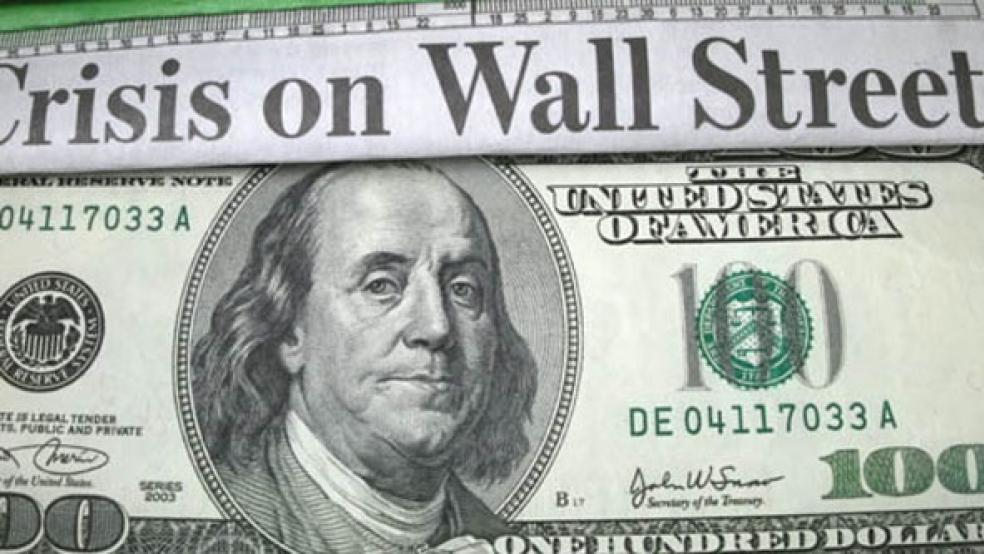It is a well-known fact that a key source of the financial crisis from which we still suffer was something called CDOs − collateralized debt obligations, which were packages of loans, mostly home mortgages, that were sold to various financial institutions. As a consequence, the ultimate holders of these debts were institutions that really knew almost nothing about them. When the economy turned down, many more of the debts went bad than anticipated, thus causing many financial institutions to fail, which exacerbated the downturn and turned an ordinary recession into the worst since the Great Depression.
Once upon a time, when a bank loaned someone money to buy a house, it held that mortgage until it was paid off. Thus the bank had a strong incentive to make sure that the borrower was credit-worthy. And in those days that wasn’t so hard, because banks normally lent only to individuals and businesses in its immediate vicinity with whom it probably had done business for many years. The banks knew very well who was a good credit risk and who wasn’t.
The problem was that a local bank with limited deposits only had so much money to lend. This made it hard even for those with good incomes and credit to get mortgages. Until the 1930s, mortgages were uncommon and people mostly paid cash when they bought a house, which obviously limited the potential for homeownership. The homeownership rate was well below 50 percent until after World War II, according to the Census Bureau.
But in the 1930s, the federal government began setting up agencies such as the Federal National Mortgage Association − popularly known as Fannie Mae − that would buy mortgages from local banks, thus replenishing the funds available to lend to other home buyers. This greatly increased liquidity in the housing market and helped fuel a vast expansion of homeownership after the war as people moved out of rental apartments in the cities in favor of houses in the suburbs. The homeownership rate jumped from 44 percent in 1940 to 55 percent in 1950 and 62 percent in 1960.
As mortgages became tradable, there was an important need for somebody to look through the CDOs and assess the risk of default. Financial institutions turned to the three principal credit rating agencies, Moody’s, Standard and Poor’s, and Fitch, which had long been in the business of rating corporate bonds with letter grades: AAA for those with the lowest risk of default, BBB for those with a medium risk and so on.
But the credit agencies were less well adept at judging the creditworthiness of CDOs than everyone, including the Securities and Exchange Commission, thought, which contributed to a bubble in the housing market as investors eagerly bought CDOs that they thought were virtually riskless. This pumped vast sums into the housing market so that more CDOs could be created to satisfy investor demand, which led to a decline in lending standards that the rating agencies failed to pick up until it was too late. As New York University economist Lawrence J. White explains:
Favorable ratings from these three credit agencies were crucial for the successful sale of the [CDO] securities based on subprime residential mortgages and other debt obligations. The sales of these bonds, in turn, were an important underpinning for the financing of the self-reinforcing price-bubble in the U.S. housing market. When house prices ceased rising in mid 2006 and then began to decline, the default rates on the mortgages underlying these securities rose sharply, and those initial ratings proved to be excessively optimistic. The price declines and uncertainty surrounding these widely-held securities then helped to turn a drop in housing prices into a widespread crisis in the U.S. and global financial systems.
Another problem is that certain biases had crept into the credit rating business dating from the 1930s, when the SEC essentially gave the force of law to credit ratings by decreeing that banks could not buy bonds with a rating less than BBB. Moreover, the SEC said that the only acceptable ratings were from “recognized” rating agencies, of which there were only four. (At the time, Standard and Poor’s were two different companies; they merged in 1941.) Thus the SEC created a de facto cartel that continues to operate to the present day.
Moreover, because the methodology used by the credit rating agencies was proprietary and critical to their business, they were not forced to divulge it, creating a lack of transparency. Thus we had a situation in which there was little competition among the rating agencies because new entrants were effectively prohibited, and the agencies weren’t required to divulge the methods they used to determine creditworthiness. As a consequence, there was no self-correcting market mechanism that would ensure accuracy in credit ratings and prevent the introduction of biases that tended to push ratings above the SEC-mandated threshold for “investment grade” securities. (See the fascinating new paper by economists David M. Levy and Sandra J. Peart.)
A final problem emerged when the credit rating agencies changed their business model. Historically, investors had paid them for their ratings, which helped ensure accuracy. If an agency was wrong too often then customers would buy ratings from one of its competitors instead. But in the early 1970s, all the agencies switched to a model in which the bond issuer paid for the rating. This created an enormous conflict of interest because the issuer always wants the best rating possible and can take its business elsewhere if it doesn’t get the rating it wants.
For many years, tradition and concerns about their reputations prevented too much upward bias from creeping into the bond ratings. But as time went by, pressure to maximize earnings led to slippage in the quality of ratings. This became obvious to everyone in 2001 when Enron declared bankruptcy. All three credit rating agencies had its bonds rated as investment grade until literally days before the company went under. This led the SEC to conduct an extensive study that finally recognized some of the structural problems in the credit rating industry.
However, problems in the industry persisted and even got worse after CDOs were created. One reason noted by Prof. White is that securities rated AA or better qualified for a lower capital requirement. Normally, banks are required to have capital equal to 4 percent of the value of mortgages held. But those with an implicit government guarantee, such as securities issued by Fannie Mae, only required capital equal to 1.6 percent of asset value. Once AA rated CDOs qualified for the same lower capital requirement that applied to quasi-government securities, it put even more pressure on the credit rating agencies to inflate ratings. That would free up bank capital for additional profit-making investments.
Issuers also began creating new securities designed to game the rating system and effectively disguise their risk. The methods used were so complex that they were virtually unintelligible even to the rating agencies. But under enormous financial pressure to rubber stamp highly profitable CDOs with an investment grade rating, the agencies went along for the ride.
Vivid evidence of the failure of the credit rating agencies to do their job was presented to the Financial Crisis Inquiry Commission on Sept. 23. D. Keith Johnson, who held high-level positions in the banking industry throughout the 2000s, testified that he was rebuffed by the rating agencies when he personally informed them of problems he had identified in the quality of many mortgages being bundled into CDOs.
As early as 2001, University of San Diego law professor Frank Partnoy identified many of the problems with credit rating agencies that subsequently fueled the housing bubble. Yet even after those problems heavily contributed to the second greatest economic crisis in American history, little has changed. In fact, the agencies are growing in importance because of their role in rating sovereign debt – bonds issued by national governments. A Sept. 29 report from the International Monetary Fund warns that some of the practices of the rating agencies may exacerbate debt problems.
The problems of the credit rating agencies point once again to the great value of information and the dangers of institutional biases. There’s no obvious solution; the best that can probably be done is to foster greater competition and transparency in the rating business. Perhaps the best advice is caveat emptor – let the buyers of securities beware those that are so opaque that their risks cannot assessed within a reasonable margin of error.




